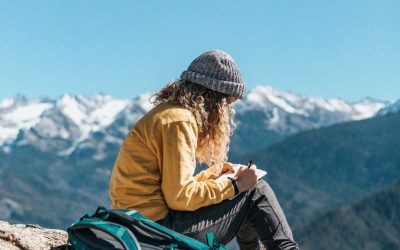Photojournalism combines two forms of storytelling: through photos and in writing. In a previous author feature, we highlighted photojournalist-poet Sara Frances and her unique hybrid media approach to storytelling. As a photojournalist, Frances details her artistic process, starting with the image before continuing with its accompanying text, whether poetry, short prose, memoir, or philosophy. Through her love for photography and literature, Frances explores humans and their memories, tracing the lines between past and present.
While photojournalism may seem like a specific niche, certain skills and elements from the practice can carry over to writing – both fiction and non-fiction. In this post, we’ll look at how writers can adopt some photojournalism skills and practices to hone their craft:
Storytelling
While storytelling is undoubtedly familiar territory to writers, the practice differs for photojournalists who combine images with text to tell their stories. Of course, even if you aren’t planning to publish pictures or illustrated books, you can gain a lot of inspiration and nuance from images. One way to foster this visual storytelling skill is by trying out photography for yourself.
If you don’t already own a camera, you can opt for used mirrorless cameras to practice your photography skills. Mirrorless cameras are small and lightweight, making them easy to carry around. Buying used is also a great way to get into the hobby, as newer camera models tend to cost more. If you’re lucky, models such as the Canon EOS M50 Mark II go for as low as $413. Once you have your camera, you can experiment with different types of photography to provide visual inspiration for your storytelling.
Visual story structure
Similarly, photojournalists often start with their images before coming up with the accompanying text. Writers can adopt this “photo first” mentality in organizing their writing. Instead of using literal still images, for example, writers can structure their writing through “snapshots” to develop a rough guideline before writing it out.
To further apply the practice of photojournalism, writers can use visual aids to structure or outline their writing, whether through their photography, by drawing or sketching out scenes or characters, or even by looking up reference images on the Internet for inspiration. The critical part is using visuals to guide the overall structure of the writing. This can also be a great and fun exercise to fight the dreaded writer’s block.
Research
Moving on to the journalism end of photojournalism — research is crucial, even if what’s being written is entirely fictional and made up. Taking the time to do research for writing can help writers write with more vivid and accurate detail, assisting readers to immerse themselves in the created setting.
Like a photojournalist would, it’s essential to get your facts right. Even in a fictional setting, some story aspects can still be rooted in realism. To take your journalist side a step further, you can get voice recorders to interview people relevant to your research. Sony recently introduced an AI-featured digital voice recorder to support speech-to-text, but a voice recording app on your iPhone can also do the trick. In that case, writers can try drawing inspiration from other fiction that share similar people, places, or times like the one they are creating. Of course, to avoid plagiarizing, the writer should then write according to their interpretation.
Cultural awareness
Finally, photojournalists are often exposed to diverse communities and cultures in their line of work. While writers are often portrayed as homebodies, writers are also often exposed to having to write about cultures, traditions, or communities they don’t belong to. As such, fostering one’s cultural awareness can help improve the quality, accuracy, and overall sensitivity of the written work.
It’s crucial not to write based on assumptions to hone cultural awareness. Instead, keep an open mind and develop the mindset to learn every aspect of a new community or culture constantly. Expanding your network, respectfully asking questions, and reading up on previous works similar to the subject matter can help create authenticity in the writing.






